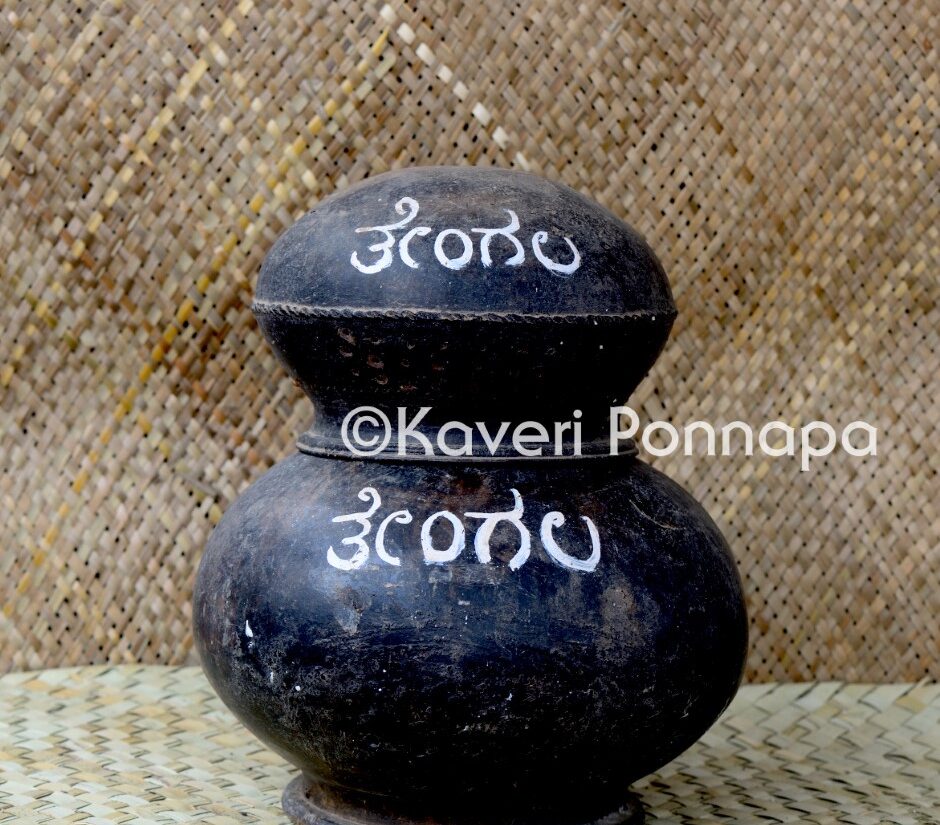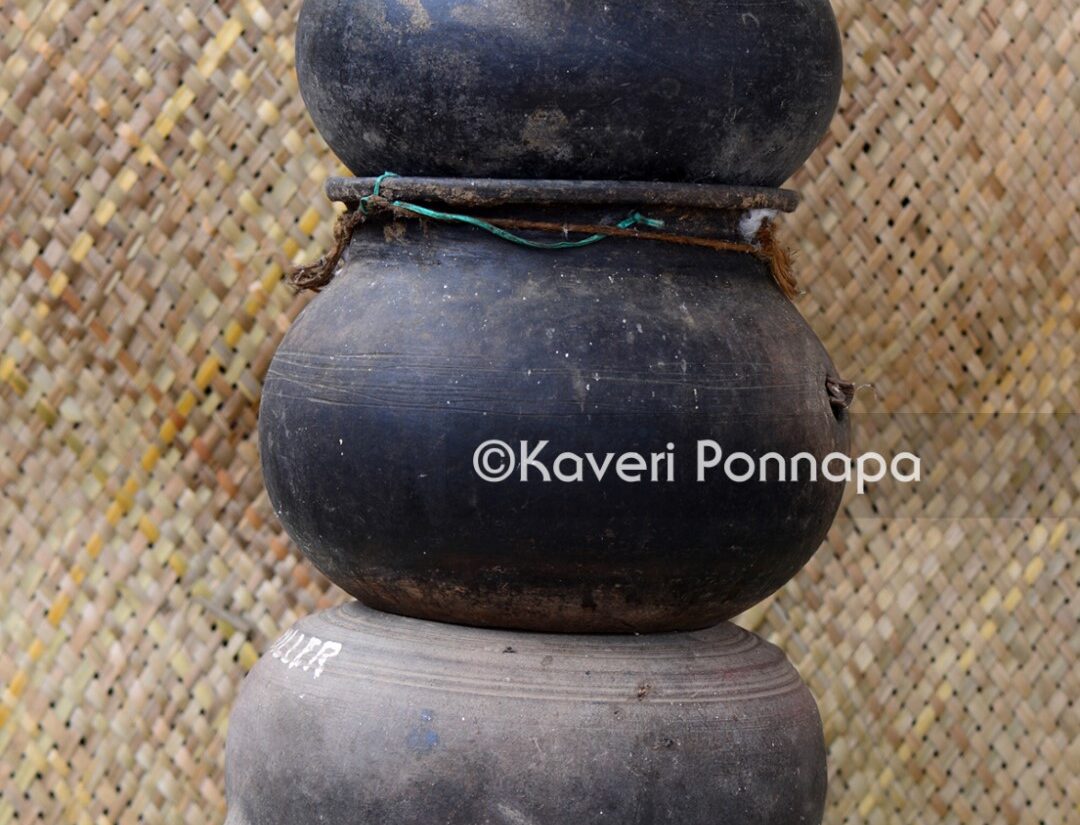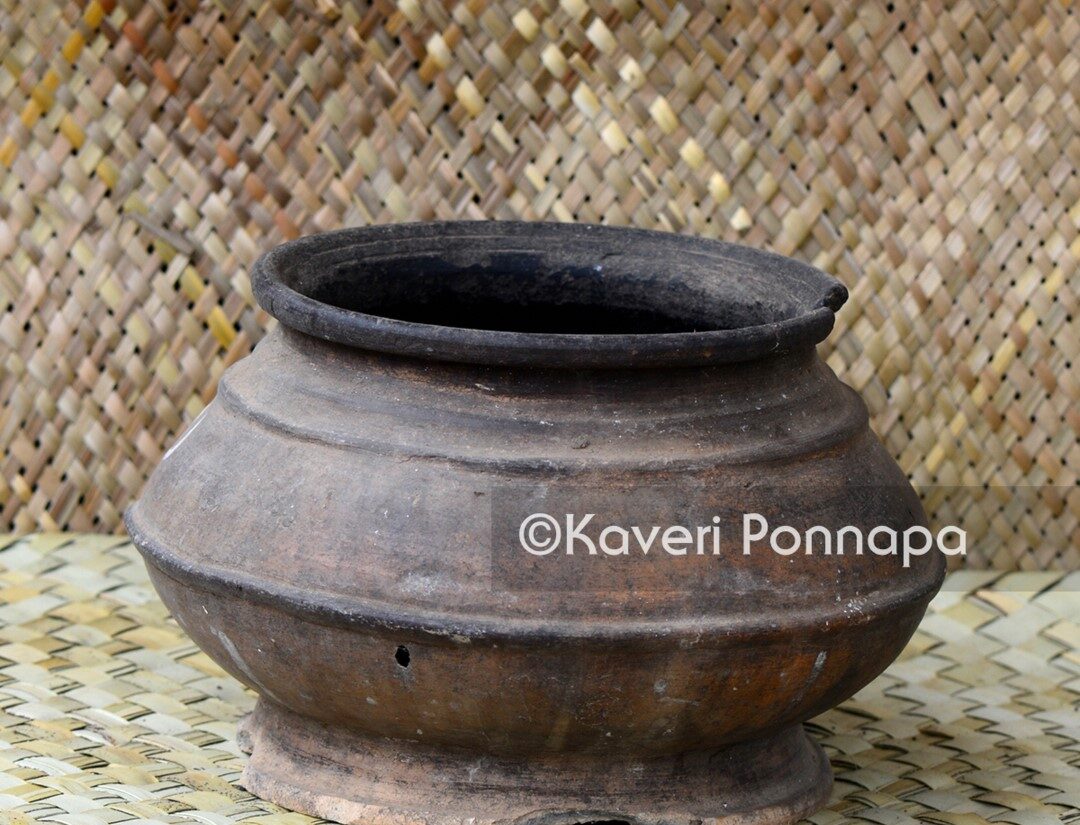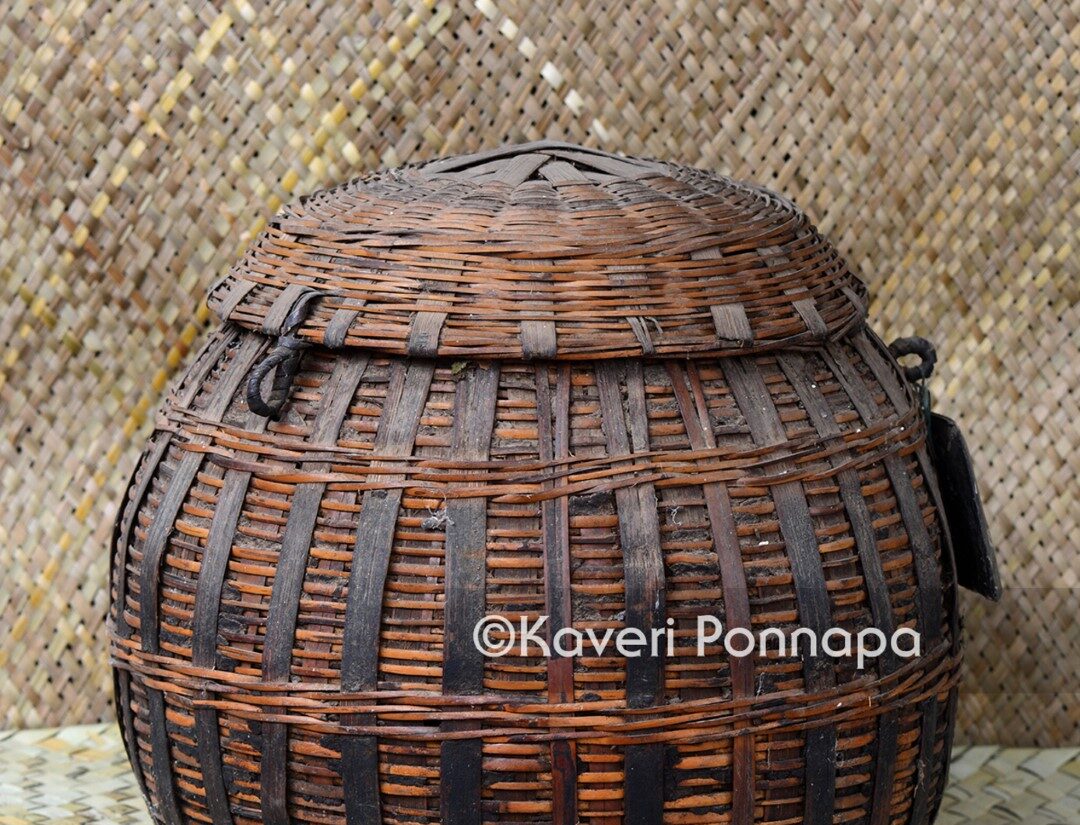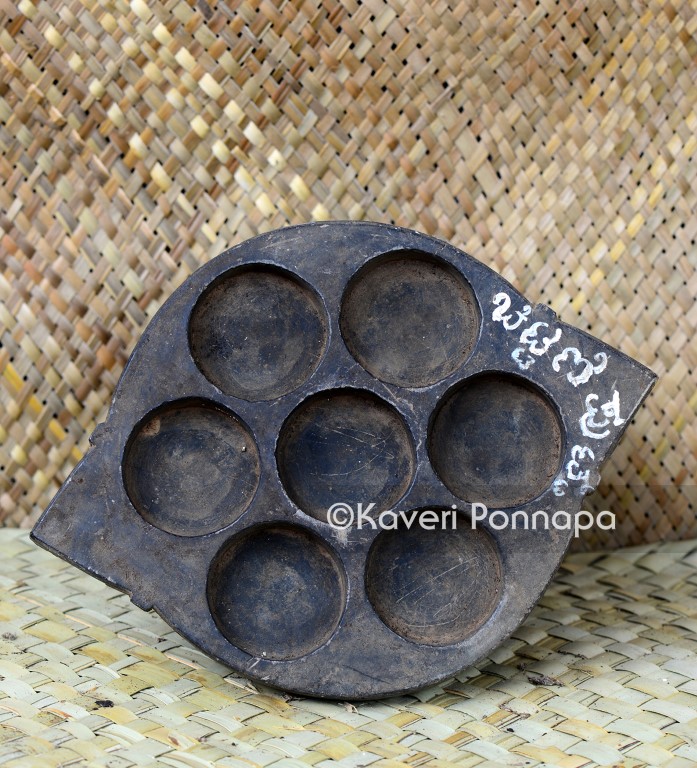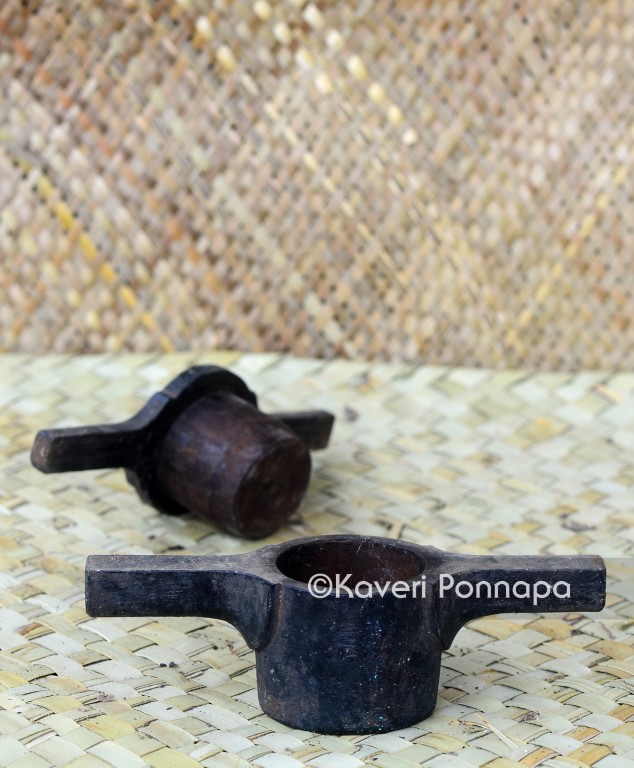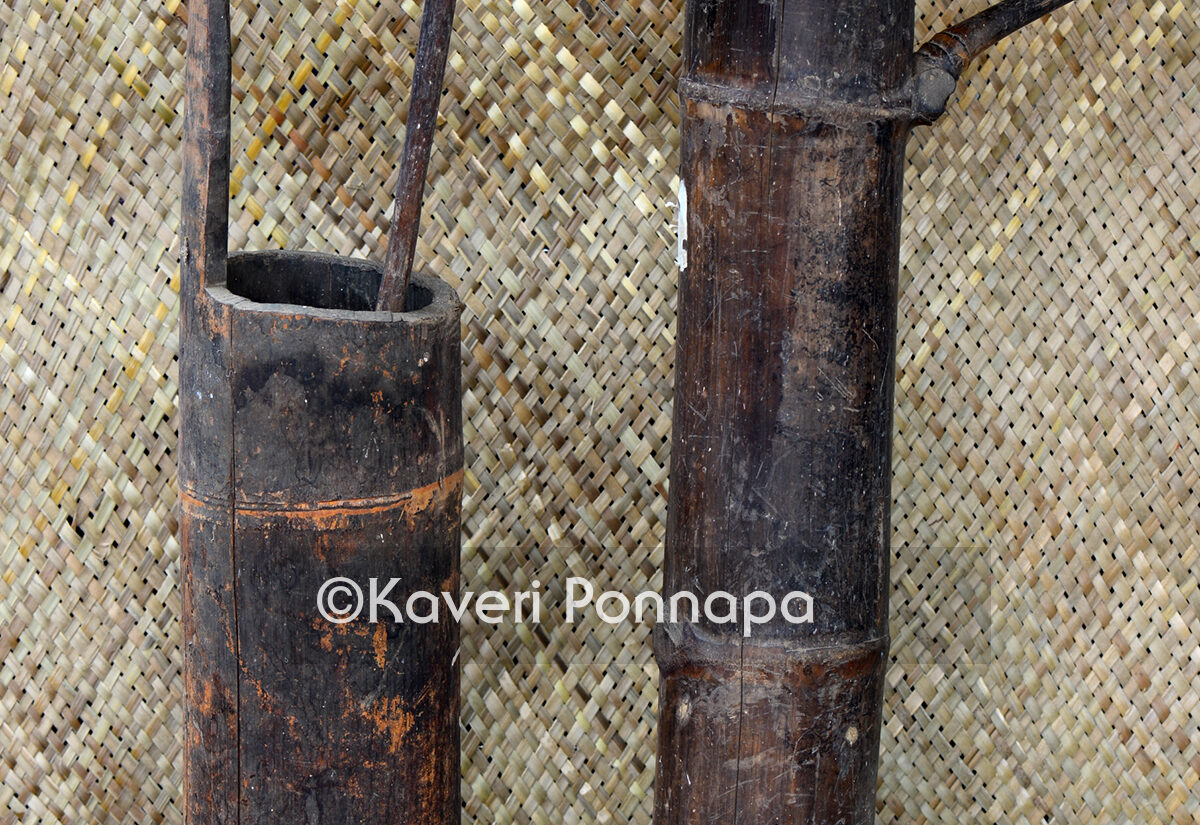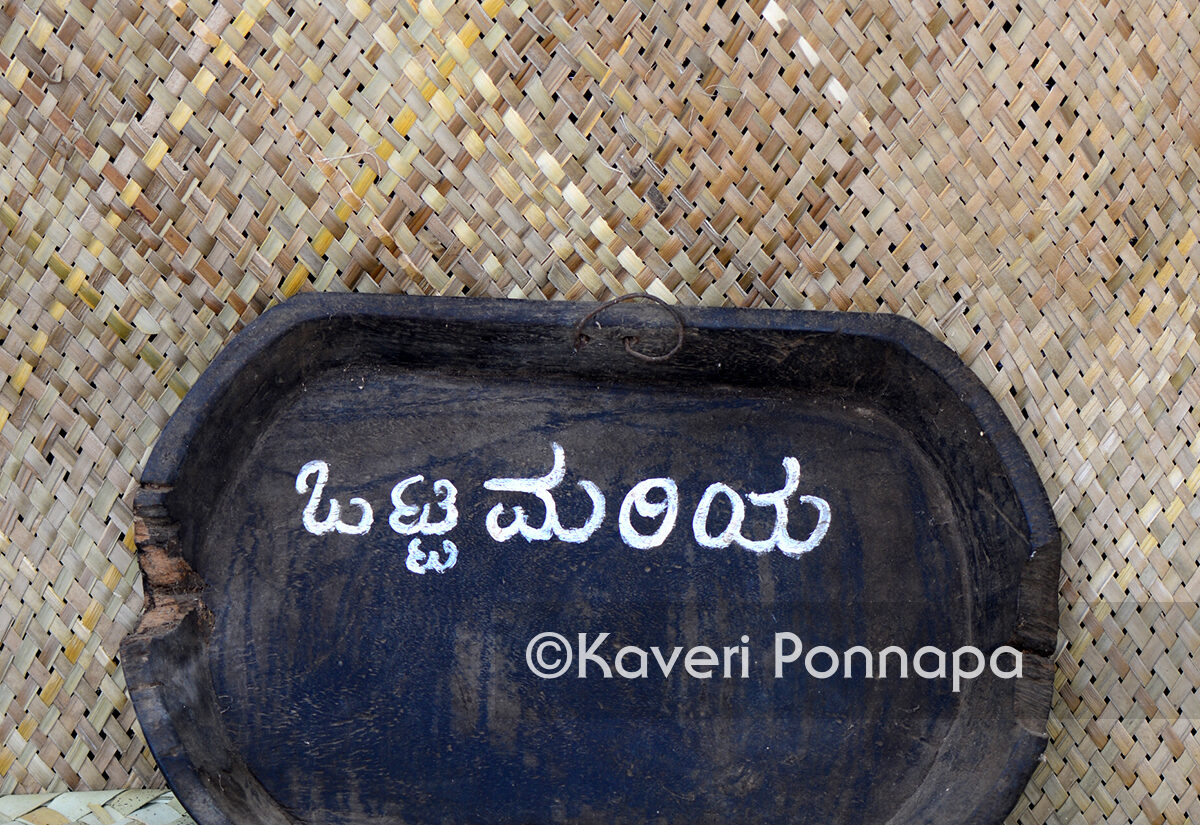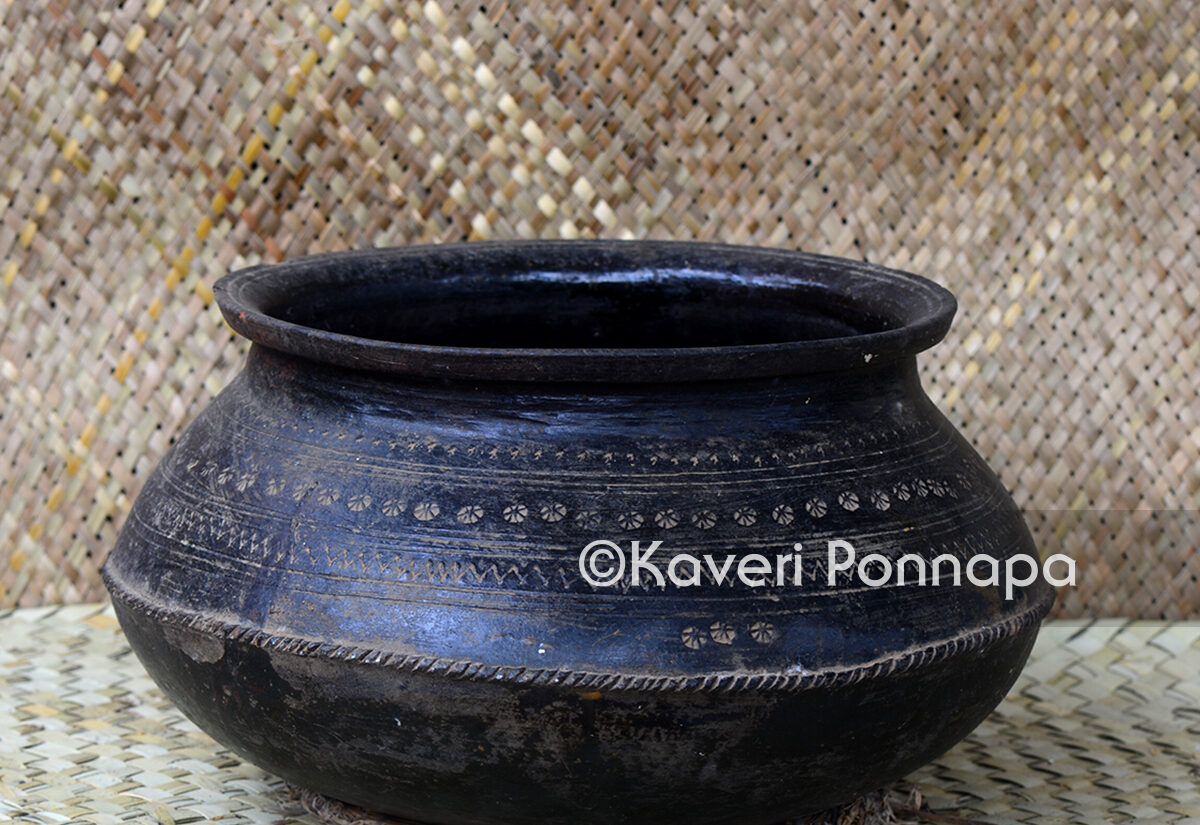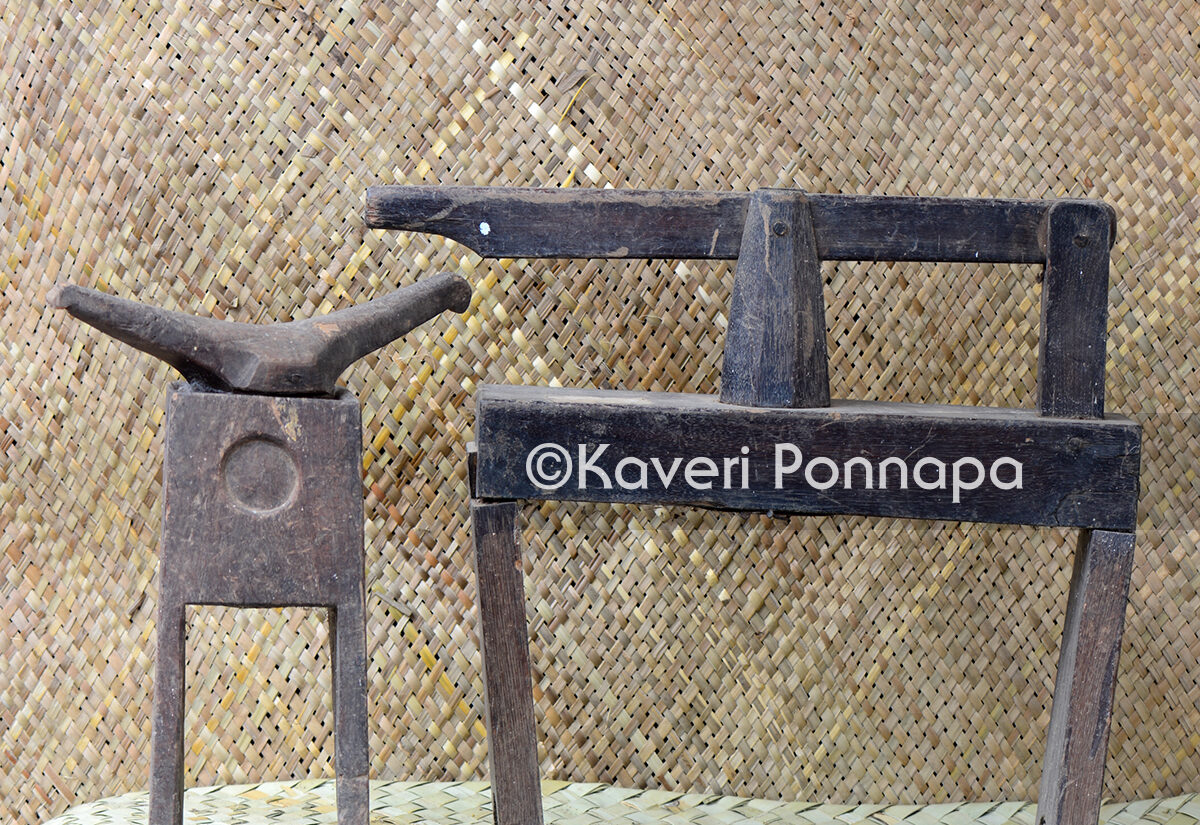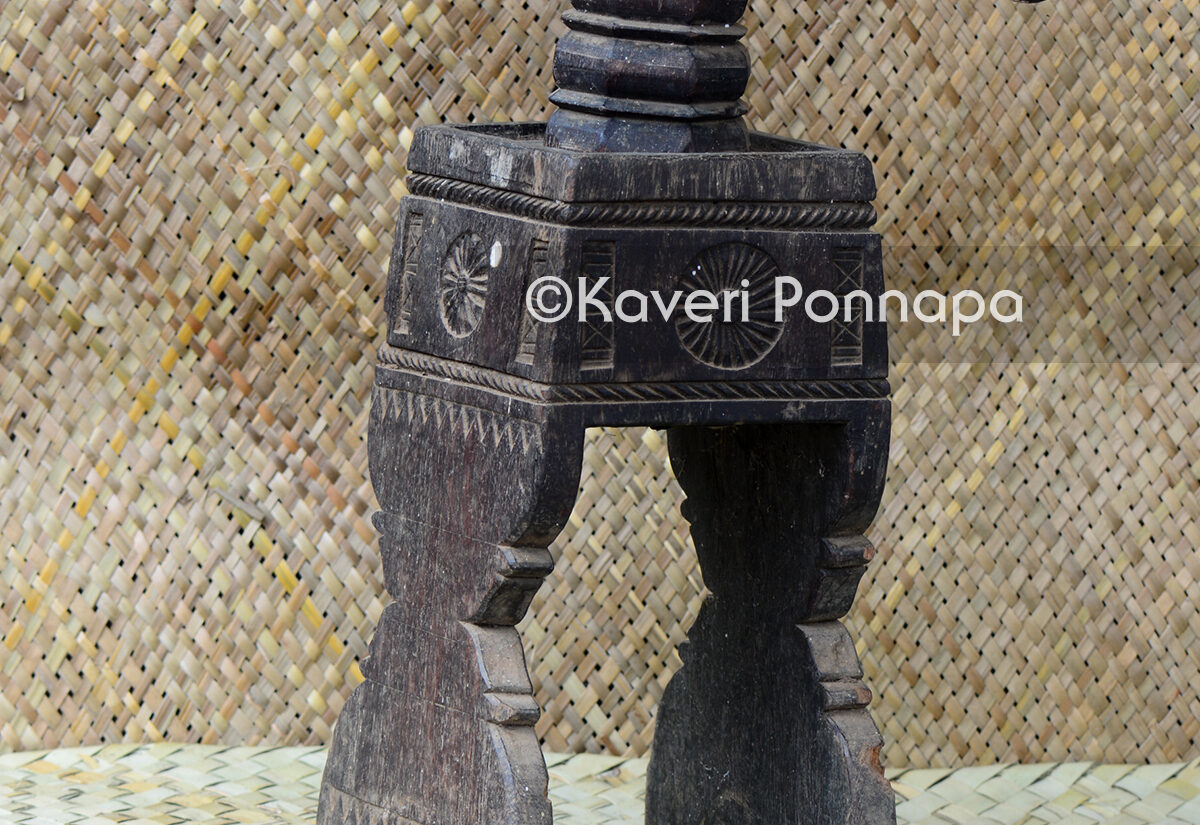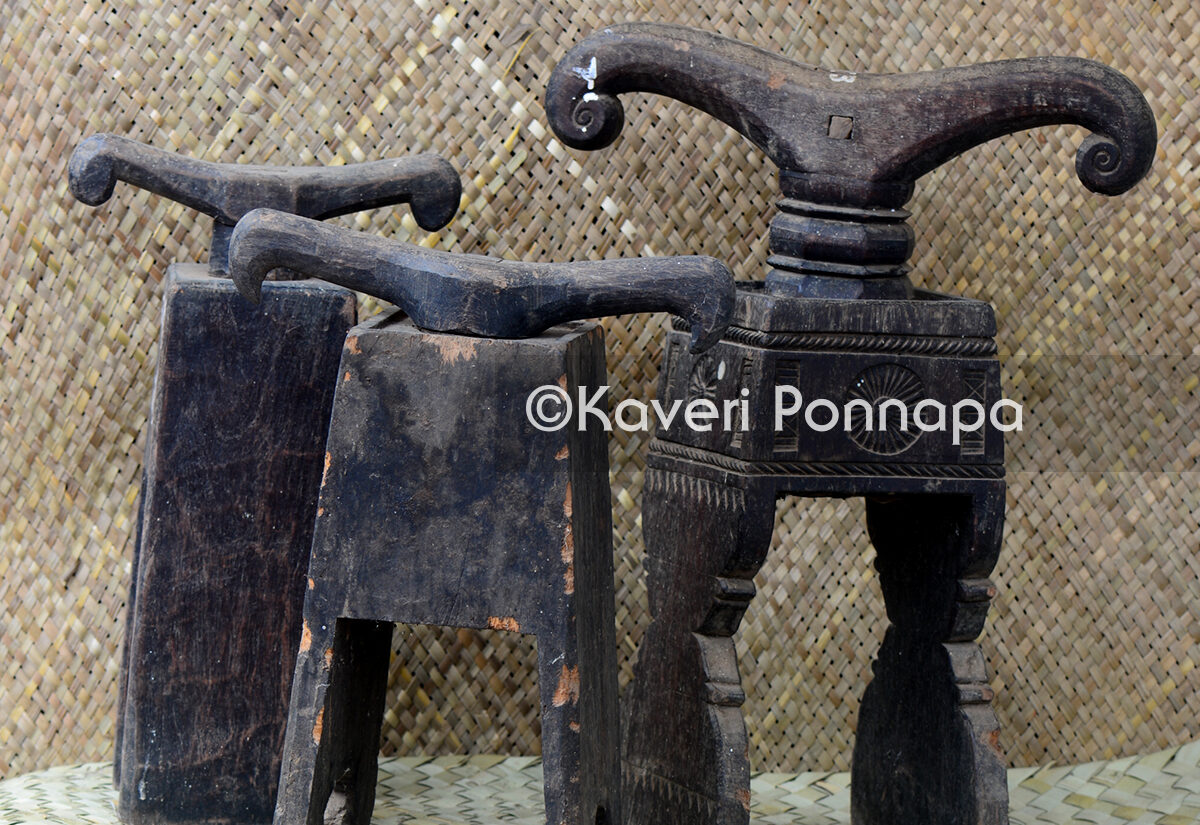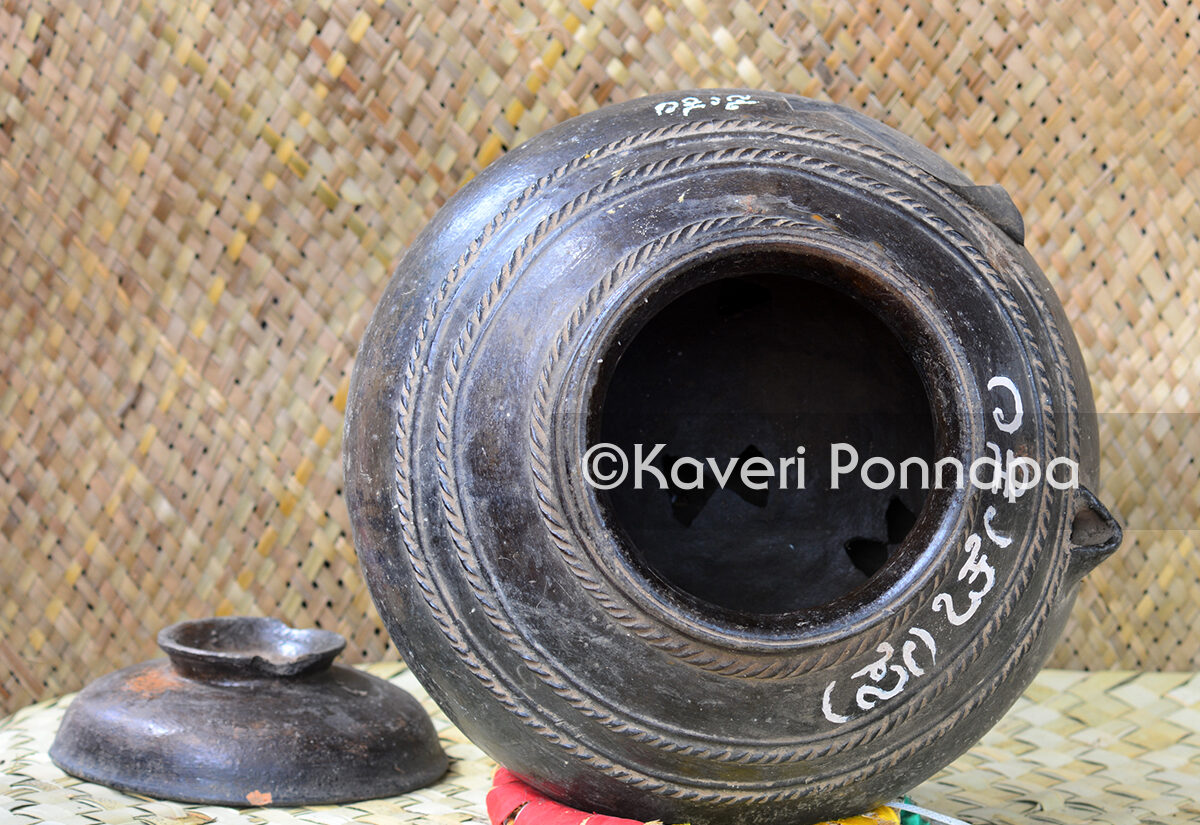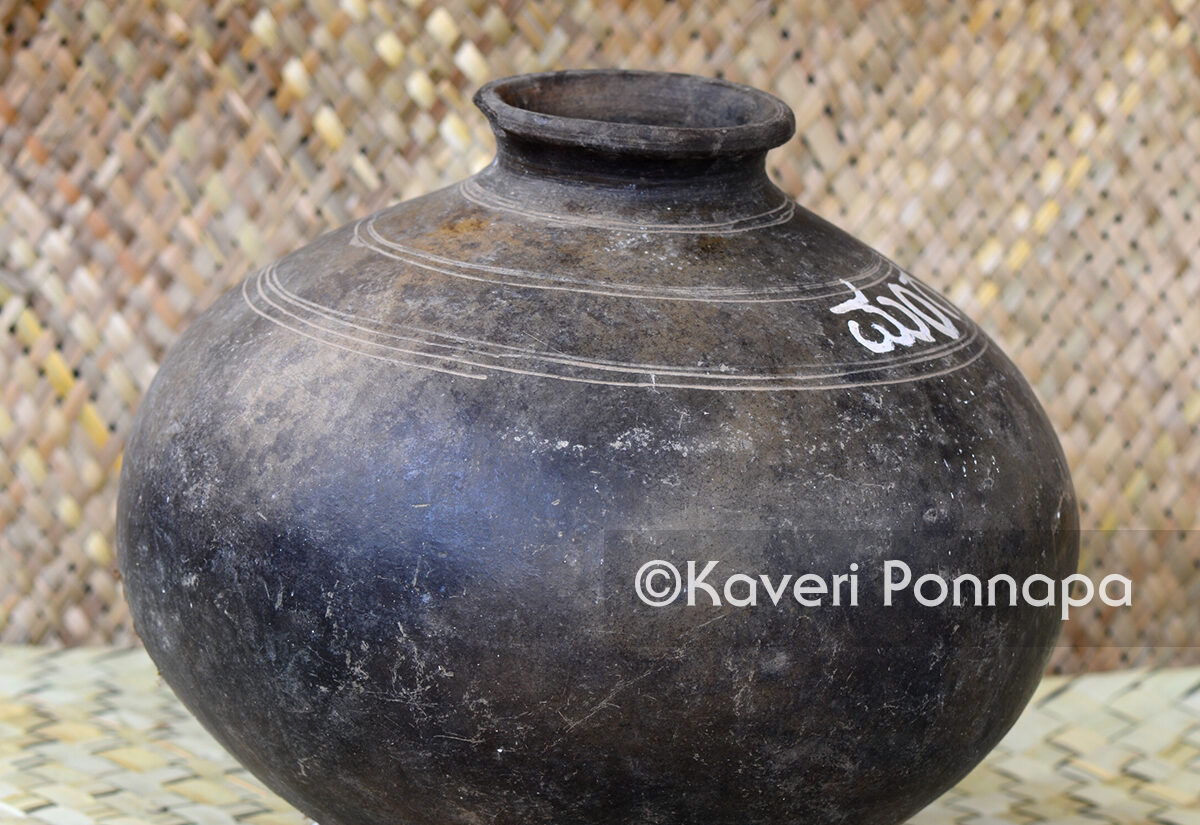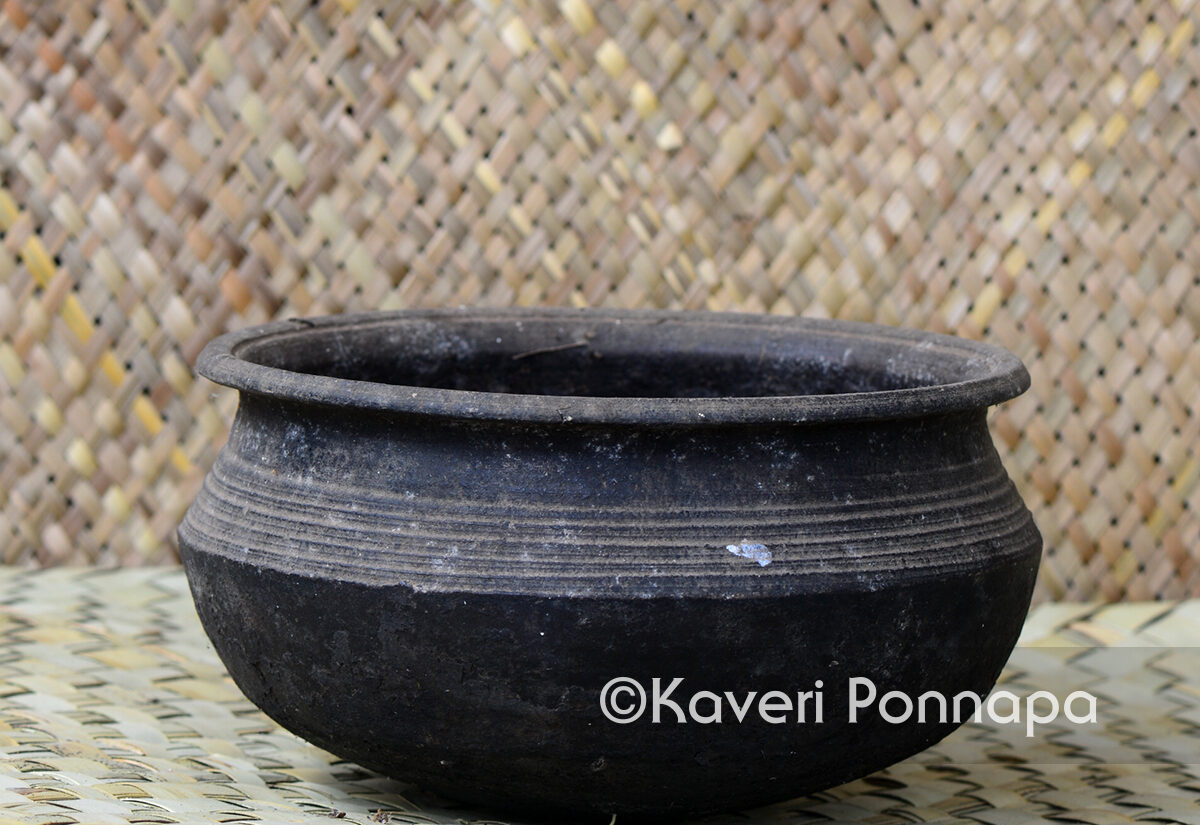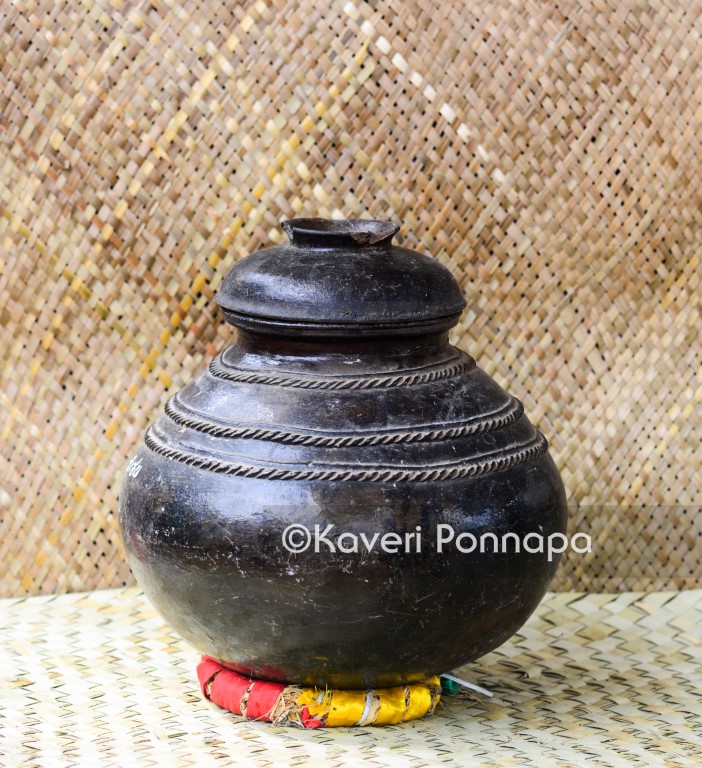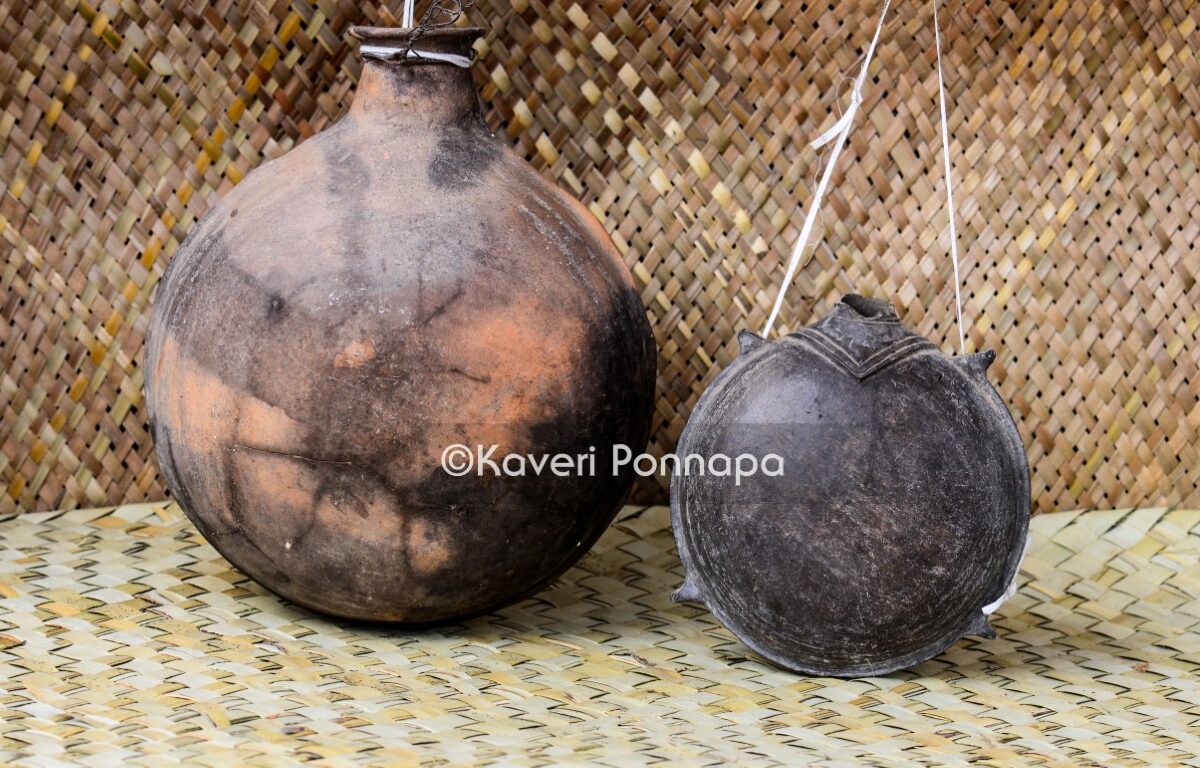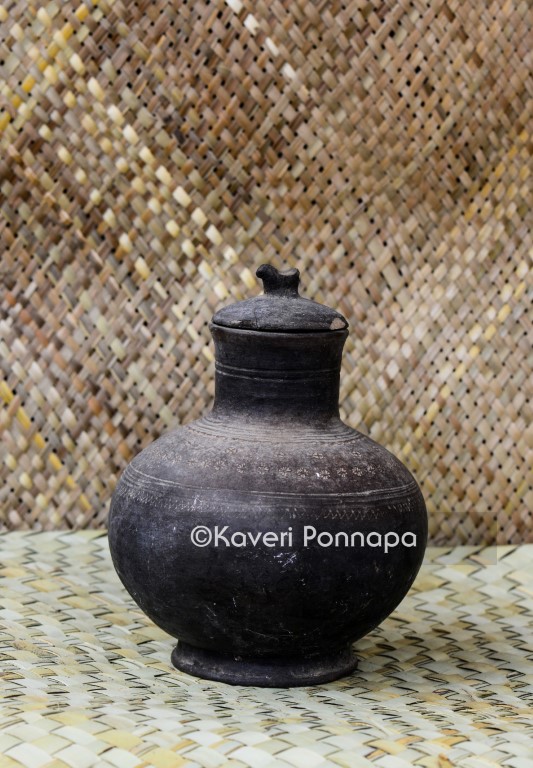Terracotta pots with small perforations known as thengala were placed in the yard, and a small quantity of eri (beeswax) place inside to attract wild...
Tiered earthenware pots were used to make kachina kall (a clear rice wine distilled from germinated paddy) which was very popular in Kodagu. The tiered...
Excess, starchy water from boiling rice was poured into a kanji kala (large earthenware pot with a base) that was usually placed on the floor...
Woven basket, made from wotae, a variety of bamboo, suspended on a wooden slat over the cooking fire. It was used to store jaggery, smoked,...
Chittani putt is a small, rounded putt made from soaked and ground raw rice, cooked rice and flavourings such as cardamom and an egg. The vessel is...
Vintage wooden press for making chakkuli, a savoury deep-fried snack popular across several cultures, made of rice flour, gram flour and spices kneaded into a dough....
Mor kuthi, buttermilk churn crafted from a cross-section of bamboo. The long-handled dasher known as mand kol has a perforated coconut shell at the end,...
Otti maria, a wooded platter for kneading dough for akki ottis (unleavened rice flatbreads). A mixture of rice flour and cooked rice is kneaded into...
Pandi curry chatti, a large terracotta pot used for cooking up to 10 kilos of pork for pandi curry, a celebratory dish that was often cooked...
Possibly two of the earliest examples of wooden noolputt wara, these very plain versions contrast with the later carved, decorated and more sturdily constructed press....
Decorated and carved noolputt wara. — From the collection of BP Appanna and Ranu Appanna
Wooden press for making noolputt (steamed rice noodles). The wooden presses have a two legged base, at the center of which is a cylindrical hollow...
Interior of a chekala or sakala, terracotta steamer, showing the perforations that allow steam to rise and cook the food placed on a higher tier.
Earthenware water storage pot used in an ain mane. — From the collection of BP Appanna and Ranu Appanna
Large terracotta pot for cooking curries. Food slow-cooked in these pots over a wood fire takes on an added depth of flavour. For dishes such...
An indispensable part of the Kodava kitchen, the sakala or chekala is a multi-purpose steam cooker, used to make paputt, kadambutt, noolputt and taliyaputt. The rounded...
Terracotta canteens with flattened sides for carrying and storing liquids. The smaller canteen was used to carry drinking water. The larger was used to store...
A vessel used to store curd, buttermilk, honey, and vegetable seeds for the next planting season.—From the collection of BP Appanna and Ranu Appanna


